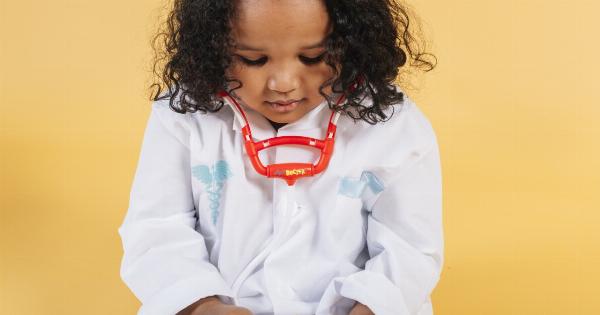Autism is a complex developmental disorder that affects the way a person communicates, interacts, and processes information.
It typically becomes evident in early childhood, and recognizing the signs of autism in toddlers is crucial for early intervention and support. While every child is unique and develops at their own pace, there are certain red flags that parents and caregivers should look out for. In this article, we will explore some of the key signs and symptoms of autism in toddlers.
1. Delayed Speech and Language Skills
One of the early signs of autism in toddlers is a delay in speech and language skills. While it is normal for some children to start talking later than others, a significant delay or absence of speech by the age of 2 is a potential cause for concern.
Autistic toddlers may not engage in typical babbling or baby talk, and they may struggle to learn and use words as expected.
2. Lack of Eye Contact
Another common sign of autism in toddlers is a lack of eye contact. Typically developing children begin to make eye contact and establish eye contact with their caregivers and others around them from an early age.
However, toddlers with autism may avoid looking into the eyes of others, which can hinder their ability to develop social relationships and connect with people.
3. Difficulty in Social Interactions
Social interaction difficulties are a hallmark characteristic of autism. Toddlers with autism may not actively seek social interactions with their peers or caregivers.
They may seem disinterested in playing games, sharing toys, or engaging in pretend play. They may prefer to be alone and struggle with understanding social cues, such as facial expressions or gestures.
4. Repetitive Behaviors and Obsessions
Repetitive behaviors and obsessions are another key sign of autism in toddlers. They may engage in repetitive body movements, such as rocking back and forth or flapping their hands.
They may also develop intense interests in specific toys, objects, or topics, focusing intensely on them for extended periods of time.
5. Sensory Sensitivities
Many toddlers with autism experience sensory sensitivities. They may be extremely sensitive to certain sounds, textures, lights, or smells. They may cover their ears or become distressed in noisy or crowded environments.
On the other hand, some toddlers with autism may seek sensory stimulation and engage in repetitive behaviors involving sensory input, such as spinning objects or flicking lights.
6. Lack of Joint Attention
Joint attention refers to the ability to share attention with others towards the same object or event. It involves gestures, eye contact, and pointing. Toddlers with autism may have difficulty establishing joint attention.
They may not point at objects of interest or share their excitement with others by showing or sharing. This can hinder their ability to engage in shared play or communicate their needs.
7. Delayed Motor Skills
Delayed motor skills can also be an indicator of autism in toddlers. They may have difficulty with activities that involve fine motor skills, such as holding a pencil or spoon.
They may also demonstrate delays in gross motor skills, such as walking or running. It’s important to note that delays in motor skills alone do not necessarily indicate autism, but when combined with other red flags, it may be cause for further evaluation.
8. Unusual Reactions to Changes in Routine
Toddlers with autism often display unusual reactions to changes in routine. They may become upset or agitated when their daily routines are disrupted. They may insist on sticking to the same schedule or following specific rituals.
Any changes, no matter how minor, can cause distress and result in challenging behaviors.
9. Preoccupation with Parts of Objects
Another common sign of autism in toddlers is a preoccupation with parts of objects. They may focus solely on spinning the wheels of a toy car rather than engaging in pretend play with the entire toy.
This intense focus on specific aspects of objects or toys can limit their ability to engage in imaginative and age-appropriate play.
10. Lack of Social Smiles
Typically, infants start social smiling around 2 to 3 months of age. However, toddlers with autism may not display social smiles as expected. They may not respond to smiles or attempts at playful interactions from others.
This can make it challenging for them to form emotional connections and develop social relationships.
Conclusion
Recognizing the signs of autism in toddlers is crucial for early intervention and support. The above-mentioned signs and symptoms can serve as red flags, but it’s important to remember that every child is unique.
If you have concerns about your toddler’s development or notice any of these signs, it’s recommended to consult with a healthcare professional or specialist for a comprehensive evaluation. Early identification and intervention can make a significant difference in the lives of children with autism.























